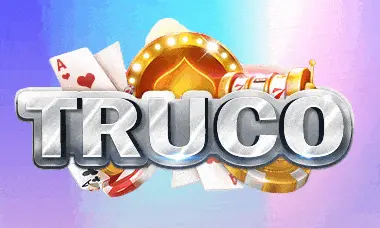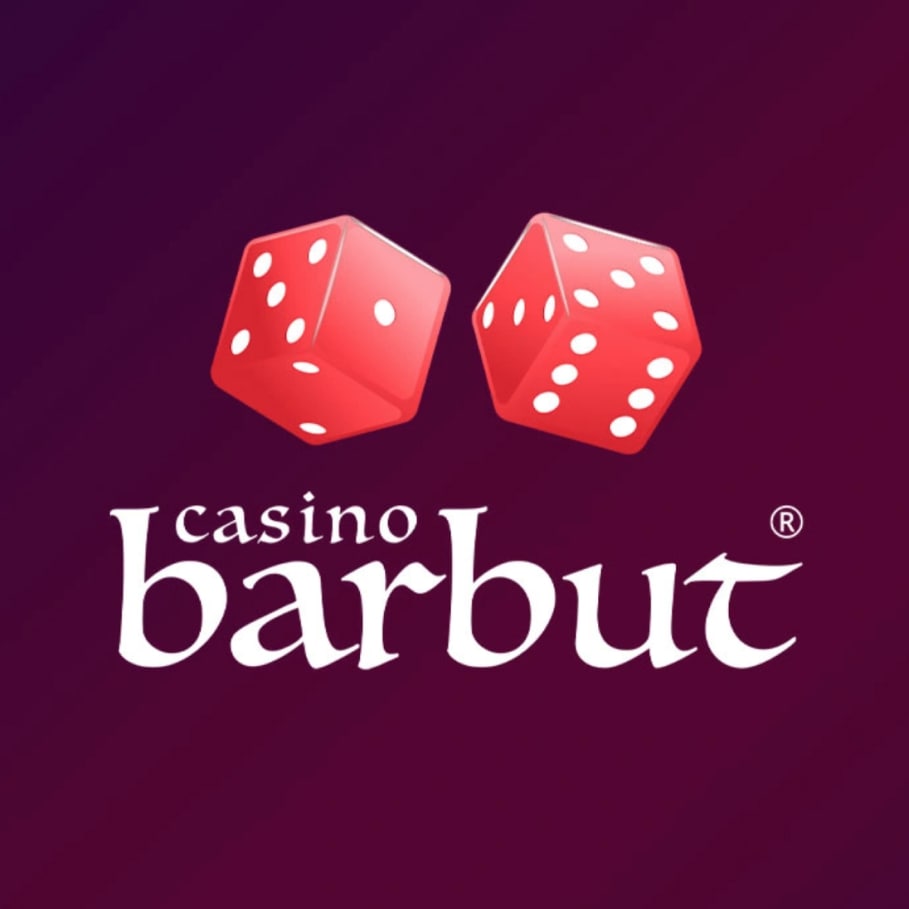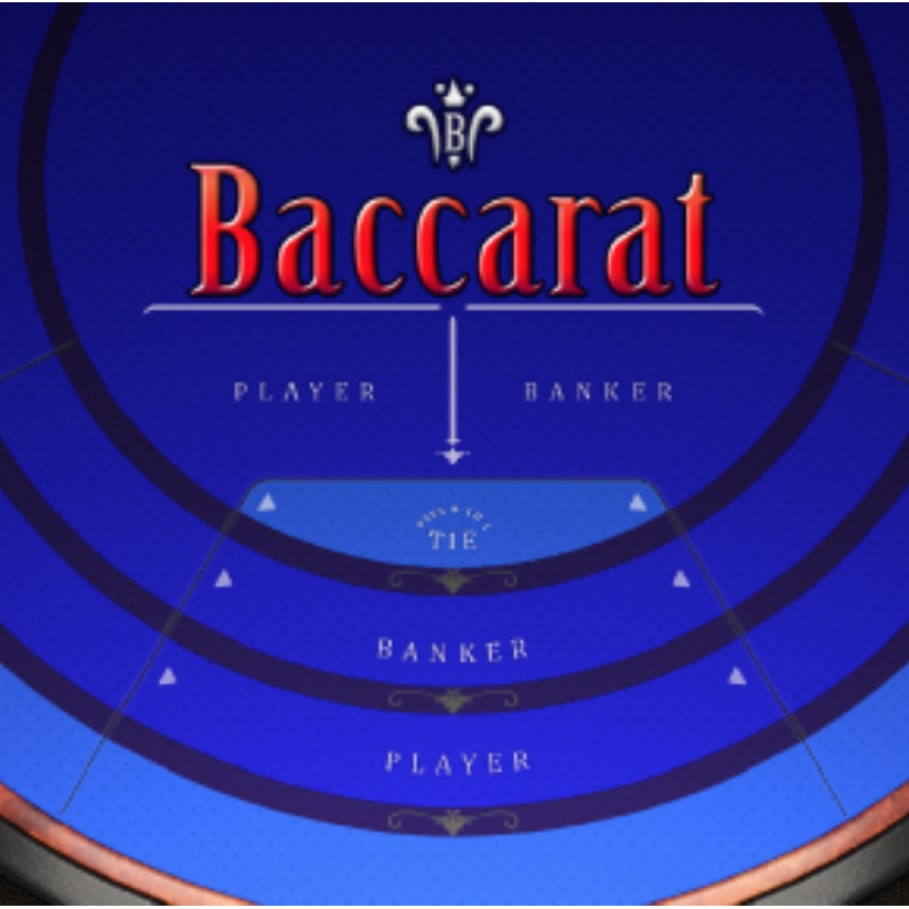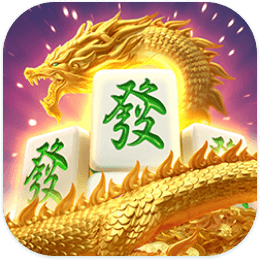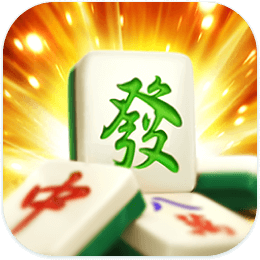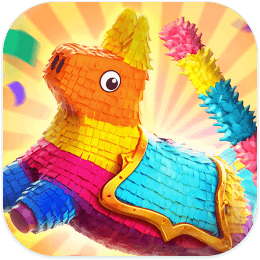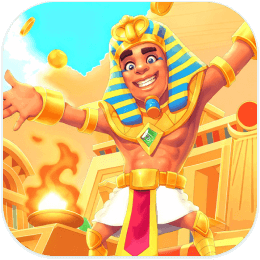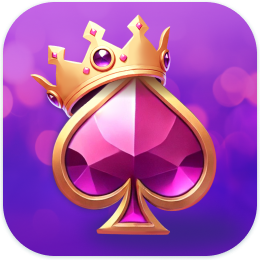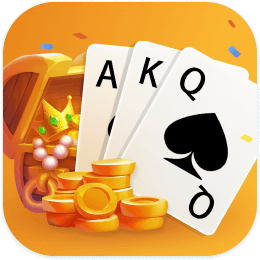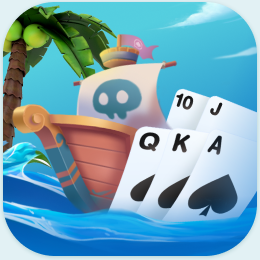Blackjack Rules - How to Play Blackjack (Beginners Guide)
Learn how to play blackjack with our beginner’s guide. We cover dealer & player rules, charts, hand values, & betting tips to help you be a better player, faster.
With simple rules and one objective, blackjack is an easy and fun card game to learn. Our guide on how to play blackjack is essential reading before a player visits the casino. Learn the rules, hand values, etiquette, and other basics to becoming a confident blackjack player with us.
Read more
Blackjack Basics for Beginners

Most people assume the objective of blackjack is to get a hand as close to 21 as possible. In reality, the aim is to beat the dealer’s hand without going over 21. It’s a small distinction but an important one, as players can often win on lesser hands by waiting for the dealer to bust. This is just one example of how knowing blackjack rules thoroughly can help new gamblers play smarter.
Our blackjack overview gives players a refresh on the game; if you want to learn how to play blackjack and win more often though, check out our guide below.
- Choose which blackjack game you want to play and take a seat. Tables usually hold 2-7 players max.





What are Face Cards Worth in Blackjack?
Face cards (King, Queen, and Jack) differ from number cards, as they each hold a value of 10. Looking at the example below, a hand containing a Queen and a 5 gives the player a hand value of 15.


Blackjack Card Value Chart
Players can use this chart to help them calculate their hand’s value in blackjack.

Best Hand in Blackjack

Blackjack Hard vs Soft Hands
Hard and soft hands in blackjack are all determined by one card: the Ace. A ‘hard hand’ in blackjack either has no Aces, or the Ace has a card value of 1 and cannot change. A hand with a flexible Ace is known as a ‘soft hand’. Examples of hard hands in 21 are K-8 or 6-A-J; soft hands can be A-4 or A-9.

Master Those Tricky Hands
Two hand values give players more trouble than any other when learning how to play blackjack: hard/soft 17 and hard/soft 16. Our basic blackjack strategy guide will help more experienced players learn the best moves for these hands.
Two hand values give players more trouble than any other when learning how to play blackjack: hard/soft 17 and hard/soft 16. Our basic blackjack strategy guide will help more experienced players learn the best moves for these hands.
Blackjack Bust Cards
Bust cards create the worst hands in blackjack. In 21, some cards are statistically less likely to create a winning hand than others. Number cards 2, 3, 4, and especially 5 and 6 alternately go by the name ‘bust cards’ because players usually go over 21 when they hit for a third or fourth card with these in their hands.
When it comes to bust cards, players should use this rule of thumb to make smarter decisions at the table:
![]() OG PRO TIPIf the dealer has any bust cards, the odds of them going over 21 are greater and players should play more conservatively to avoid busting themselves. When the dealer’s upcard is 7 or higher, the dealer will likely have a hand value between 18-21 and players may want to take more risks in their gameplay.
OG PRO TIPIf the dealer has any bust cards, the odds of them going over 21 are greater and players should play more conservatively to avoid busting themselves. When the dealer’s upcard is 7 or higher, the dealer will likely have a hand value between 18-21 and players may want to take more risks in their gameplay.
Blackjack Push
Occasionally the dealer and a player will both have the same hand value in a blackjack game. When this happens, the player’s original bet becomes a ‘push’ and the dealer returns it to them. The player doesn’t lose or win any money on that wager.
Many players wonder why a blackjack push returns their wager when they didn’t lose. When you bet in blackjack, you’re wagering on having a better hand than the dealer. If neither you nor the dealer has the upper hand, then no one has met the terms of the bet and the wager is off.
Like any other casino game, blackjack tables have bet limits all players must follow. These vary depending on whether the game is for high rollers or low stakes gamblers, but usually range between $2-$1,000 for minimum and maximum bets, respectively.
Players must make their wagers before any cards are dealt in blackjack. After that, the game starts. Once it’s the player’s turn they have a choice of six moves, some of which come with additional betting rules:
Hit Rules

Stand Rules

After a player stands, their turn is complete and the rules state they cannot make any more bets. Players typically stand on hands worth 17 or more and hands valued 13-16 unless the dealer has an upcard of 7 or higher.
Double Down Rules

Some betting rules in blackjack games state players can only double down if their hand value totals 9, 10, or 11, and they can only double down once per round. It’s worth doubling down on almost all hands of 10 or 11 and doing so can pay dividends on many hands that contain an Ace and 2-7, but only if the dealer has a low upcard.
Split Rules

Splitting has the biggest variation in rules out of any move in 21. Some casinos only allow one split per round, while let players split up to three times, resulting in four hands. Players should always ask the dealer or check the blackjack variation rules if they’re unsure of the casino’s betting rules.
Pairs of Aces and 8s are always worth splitting, as are most pairs of 2s, 3s, 6s, and 7s as long as the dealer’s upcard is 7 or lower.
Surrender Rules

- Early Surrender: a player can surrender before the dealer peeks at their hole card
- Late Surrender: a gambler can surrender after the dealer has peeked for blackjack
Early surrender is rare and only appears in online blackjack games occasionally. PlayTech has a few RNG-powered games with early surrender, for instance.
Some blackjack variations do not offer surrender as an option. These are generally blackjack games with worse odds for players.
Even Money Rules
When a player has blackjack and the dealer’s upcard is an Ace, they may ask the player if they want ’even money’. This means accepting a 1:1 payout on their original bet before the dealer checks for blackjack. Like insurance, this bet isn’t generally advisable because players are statistically better off not taking the bet.
Blackjack Side Bets
As you play blackjack, you may notice online casinos offer additional wagers in the game. These side bets come with more risks but do offer players potentially bigger payouts. Side bets may be fun to make, but wagers like insurance can also drain your bankroll if you don’t know how to play them. Check out our side bets guide to learn the betting rules for these special wagers.
Think you’re ready?
Test your skill with our free blackjack arcade
Free Blackjack Arcade Test your skill with our free blackjack arcade
Blackjack dealers follow the same basic rules and objective as players in 21. Number and face cards have the same values, and Aces are still worth one or 11 for the dealer. Where dealer rules differ in blackjack though is when it comes to bets.
Given dealers are responsible for handling wagers, blackjack rules ban them from making these bets:
- Take Insurance
- Split hands
- Double down
- Surrender
Blackjack dealer rules also differ when it comes to standing. Generally, the rules state the dealer must hit if their hand value is 16 or less and stand on hands of 17 or more. Depending on casino rules and blackjack variations though, most dealers will hit on a soft 17.
The final difference between dealer and player rules is that dealers take their turn last. This is the case in any blackjack game, as all wagers depend on the outcome of the dealer’s hand.
How to Deal in Blackjack
Besides betting rules, dealers must also follow specific steps when it comes to dealing cards. The game typically follows these steps:
- When a game needs a new shoe, the dealer shuffles the cards using a continuous shuffling machine (CSM), automatic shuffler, or hand shuffling.
- The dealer will then insert the ‘cut card’ into the deck, or ask the player to their immediate right to add it. The cut card is a plain, plastic card. When the game reaches the cut card, the dealer reshuffles the deck.
- After inserting the deck into the shoe, the dealer waits for players to add their bets to the table.
- The dealer removes the first card in the deck as a ‘burn card’ and then begins dealing cards.
- Working from their left at the table, the dealer gives each player an upcard before giving themselves one too.
- The dealer goes around the table again, giving each player another upcard. They finish by dealing themselves one card face-down.
- Starting from the dealer’s left, players take their turns, and the dealer deals cards as needed.
- Once all players have finished their turn, the dealer plays their hand. New players often ask why dealers add cut cards or shuffle the shoe before it’s been played through. Casinos take extra steps to prevent card counting in blackjack and one method is through limiting the deck penetration in games. Card counting is an advanced skill though and should only be pursued by players confident in the game’s rules and basic blackjack strategy.
New players may notice that online gambling sites and casinos have different rules and procedures for their blackjack games. Some of these restrictions work in the player’s favor, others can decimate their chances of winning. Players should always check the following table rules before joining a blackjack game:
- Blackjack Payouts: Blackjack generally gives a 3:2 payout, but some casinos occasionally offer lucrative 2:1 payouts too. Avoid 21 games offering a stingy 6:5 payout on blackjack.
- Number of Decks: Most blackjack table rules dictate 6-8 decks in the shoe, but single-deck games are available and offer players the lowest house edge in 21.
- Bet Limits: Blackjack tables will feature various bet limits to attract players with different bankroll sizes. Choose the table that will give you the most gameplay for your money.
- Mixture of Rules: Some casinos are selective about blackjack rule variations. As a guide, players should choose table rules that give players more options over ones that limit their moves.
Basic Moves in Blackjack

Casinos use these variations to limit risk in their blackjack games. For players, some of these rules are detrimental to how often they win and how much money the casino pays out. To help our players find the best real money blackjack games to play, we’ve compiled a table of the best and worst rule variations in 21.
| Good for Players | Bad for Players |
|---|---|
| Blackjack pays 3:2 or 2:1 | Blackjack pays 6:5 |
| Early/Late Surrender | No Surrender |
| Standing on Soft 17 | Hitting on Soft 17 |
| Single/Double Deck | 6-8 Decks |
| Doubling Down on Soft Hands | No Doubling Down on Soft Hands |
| Resplit Pairs and Aces | No Resplitting Aces |
| Doubling Down on Any First Two Cards | Only Doubling Down on 10 or 11 |
| Hand Shuffling or Auto Shuffling | Using Continuous Shuffling Machines |
| Players Can Enter Games Mid-Shoe | Players Cannot Enter Games Mid-Shoe |
Online casinos offer dozens of different blackjack games, but these are usually slight alterations on two main variants of 21: American blackjack and European blackjack. Both follow the same rules and objective, but the hole card rule creates a vital difference between the two.

European blackjack is a no-hole card game, meaning the dealer does not see their second card until all players have completed their turns. Even when the dealer’s first card is an Ace, they won’t peek at their other card.
This small rule variation has a big effect on players’ bankrolls. With no-hole-card blackjack, players can potentially waste money on doubling down and splitting hands when the dealer has already won.
Like the hole card rule, blackjack variation rules can reduce or boost a player’s odds of winning. Use this at-a-glance guide to the three most popular blackjack games to find the tables with the best odds:
American Blackjack Rules
| Decks Used: | 6-8 |
|---|---|
| Dealer Stands: | 17 |
| Hole Card Game?: | Yes |
| House Edge: | 0.5% |
| Blackjack Payout: | 3:2 or 6:5 |
| Late Surrender?: | Allowed |
| Double Down?: | Yes |
| Double Down on Splits?: | Allowed |
| Decks Used: | 6-8 |
|---|---|
| Dealer Stands: | 17 |
| Hole Card Game?: | Yes |
| House Edge: | 0.5% |
| Blackjack Payout: | 3:2 or 6:5 |
| Late Surrender?: | Allowed |
| Double Down?: | Yes |
| Double Down on Splits?: | Allowed |
European Blackjack Rules
| Decks Used: | 2-8 |
|---|---|
| Dealer Stands: | Soft 17 |
| Hole Card Game?: | No |
| House Edge: | 0.38% |
| Blackjack Payout: | 3:2 |
| Late Surrender?: | No |
| Double Down?: | Only if hand total of 9, 10, or 11 |
| Double Down on Splits?: | No |
| Decks Used: | 2-8 |
|---|---|
| Dealer Stands: | Soft 17 |
| Hole Card Game?: | No |
| House Edge: | 0.38% |
| Blackjack Payout: | 3:2 |
| Late Surrender?: | No |
| Double Down?: | Only if hand total of 9, 10, or 11 |
| Double Down on Splits?: | No |
Vegas Downtown Blackjack Rules
| Decks Used: | 2 |
|---|---|
| Dealer Stands: | 17 |
| Hole Card Game?: | Yes |
| House Edge: | 0.39% |
| Blackjack Payout: | 3:2 |
| Late Surrender?: | No |
| Double Down?: | Yes |
| Double Down on Splits?: | Allowed, some places have no limit on hands |
| Decks Used: | 2 |
|---|---|
| Dealer Stands: | 17 |
| Hole Card Game?: | Yes |
| House Edge: | 0.39% |
| Blackjack Payout: | 3:2 |
| Late Surrender?: | No |
| Double Down?: | Yes |
| Double Down on Splits?: | Allowed, some places have no limit on hands |
Vegas Strip Blackjack Rules
| Decks Used: | 4-6 |
|---|---|
| Dealer Stands: | Soft 17 |
| Hole Card Game?: | Yes |
| House Edge: | 0.48-0.72% |
| Blackjack Payout: | 3:2 |
| Late Surrender?: | No |
| Double Down?: | Yes |
| Double Down on Splits?: | Allowed, up to 3x to make four hands (Aces can only be split once) |
| Decks Used: | 4-6 |
|---|---|
| Dealer Stands: | Soft 17 |
| Hole Card Game?: | Yes |
| House Edge: | 0.48-0.72% |
| Blackjack Payout: | 3:2 |
| Late Surrender?: | No |
| Double Down?: | Yes |
| Double Down on Splits?: | Allowed, up to 3x to make four hands (Aces can only be split once) |
You may know the rules and moves to 21, but what if you want to maximize your chances of winning? Our top 10 tips for winning at blackjack will help new and veteran players make smarter moves at the blackjack table. From finding tables with better odds to gaining more bonuses from casinos, our tips can help players win more rewards for their gameplay.
Blackjack rules stay the same whether you play online or in a casino venue, but the gameplay style varies. Blackjack games are faster and there are more distractions in brick-and-mortar casinos, but the biggest contrast is game etiquette. Players must follow specific hand signals and manners when playing blackjack at the casino, else risk losing cash on silly mistakes or revealing themselves as a newbie at the table.
Blackjack casino etiquette is easy to master and helps the dealer manage games faster, so every player should learn these formalities. Start acting like a blackjack expert at the tables with our advice below:
Blackjack Hand Signals
The most important difference between playing 21 at a casino versus mobile blackjack is the use of hand signals. Along with verbalizing their decisions, players should use hand signals to notify the dealer of their intentions in the game.
These hand signals are part of a universal system adopted by all casinos. So, whether you’re hitting the Vegas Strip or joining the VIP rooms of Macau, you’ll fit right in.
- Hit
If a player wants another card, they should tap their index finger on the table
- Stand
To do this, a player just needs to wave their hand or hold an open palm over the table to signal to the dealer.
- Double down
Players can simply match their wager in chips to indicate to the dealer that they want to double down.
- Split
To split their hand, players should match their original bet with chips and then give the ‘peace sign’ to the dealer. The last step is essential as it tells the dealer you want to split, not double down.
- Surrender
A player should draw a horizontal line across the table with their index finger to signal they want to surrender. Dealers can sometimes mistake this for hitting, so players should especially verbalize their decision with this move, too.
Blackjack Etiquette
Compared to other card games like poker, blackjack is more laid-back. Yet 21 comes with some etiquette that players should learn if they want to pass as a pro at the blackjack table.
- Don’t Hand Bets To The Dealer: Players should simply place their chips on the table. Although dealers are happy to help, they can’t place chips down on your behalf.
- Leave Face Up Cards Alone: Fidgeting with cards isn’t well-received at brick-and-mortar venues. There’s no need to disturb cards that have been dealt face up.
- Handle Cards with One Hand: Handling cards with two hands is seen by many casinos as possible tampering. Stick with your dominant hand and never remove cards from the table.
- Don’t Take Too Long: If you’re playing in person, or in live blackjack games with other players, make your next move as quickly as you’re comfortable doing.
- Signal AND Say Your Decision: Signals are appreciated by casino security camera operators but also serve to avoid errors due to confusion at the table.
- Tip Your Dealer: Dealers in reputable land-based venues are paid well but, especially in US venues, tipping is common. Don’t worry about tipping in online blackjack games, though.
- Use the Lingo: Learn the correct blackjack terms to avoid any confusion at the table. If you’re playing 21 at home or hosting a blackjack party with friends, the rules and objective of this casino game remain the same. Given the casual setting and lack of an official dealer though, some adjustments should be made for home blackjack games:
Number of Players: Keep this to 2-7 players (including the dealer). Any more, and the game gets harder to manage.
Dealing Cards: Traditionally, home blackjack games choose the first dealer by having one player deal cards one by one to each player until someone receives an Ace. That player becomes the first dealer of the game. After that, players go around the table and take turns being the dealer.
Set Betting Limits in Advance: Agree on betting limits before the game starts to avoid confusion.
Rule Variations: In private blackjack games, dealers don’t have to follow the casino’s prescribed betting and dealer rules of standing on 17 or ties being a push. Whatever you choose, make sure there’s no severe advantage given to either side.
Payouts: Along with betting rules, private blackjack games can have different payouts to what casinos use. For instance, it’s common in home blackjack games for dealers to win ties, and for natural blackjack to pay 2:1.
Blackjack Side Bets
Get the lowdown on these fun and risky wagers.
Free Blackjack Games
Play top blackjack games, with no download or sign-up required.
How to Win at Blackjack
Raise your game with simple tips from our expert, Mr Blackjack.
Get the lowdown on these fun and risky wagers.
Play top blackjack games, with no download or sign-up required.
Raise your game with simple tips from our expert, Mr Blackjack.
What is blackjack?
Blackjack (or 21) is one of the most popular casino games in the world. It uses 1-8 decks of cards and sees players take turns competing against the dealer. The player’s aim in blackjack is to achieve a higher hand value than the dealer, without going over a count of 21. Players do not compete against one another, so multiple gamblers can win against the dealer in a blackjack game.
How many decks are used in blackjack?
Classic Blackjack uses a single deck, but many casinos and online gambling sites use 6-8 decks in their blackjack games.
How do you play the 21 card game with 2 players?
In blackjack with two people, one person becomes the dealer and the other the player. The dealer deals two face-up cards; one for the player, the other for themselves. They deal another card face up to the player, and one card fa
What does double down mean in blackjack?
When a player doubles down in blackjack, they double their bet in the middle of the hand in exchange for one card only. This wager is risky as it can end a player’s betting early on a low second card. However, many players incorporate doubling down into their blackjack strategy, particularly if their cards equal 11 and the dealer has a low card.
When do you bet in blackjack?
Players make their wagers at the start of the round before any cards are dealt. Starting to their left, the dealer works their way around the blackjack table. Once it’s a player’s turn they can make additional wagers, like side bets. A player cannot make any more bets after their turn ends.
What does push mean in blackjack?
When the dealer and a player have the same hand value in blackjack, that is a push. When this happens, the dealer returns the player’s bet. This means the player has neither won nor lost any money in that round of the game.
What happens when you get blackjack?
Blackjack rules state that when a player or dealer reaches 21 in their first two cards they get blackjack. If a player gets blackjack, this beats any other hand in the game, unless the dealer also hits blackjack. In this scenario, the player’s wager becomes a push. The payout for hitting blackjack is 3:2, although some casinos offer a lower payout of 6:5.
What are face cards in blackjack?
Face cards refer to Jack, Queen, or King cards of any suit in blackjack. Each face card has a value of 10, which makes them particularly valuable to players in blackjack. When paired with an Ace, face cards can make blackjack.
How much is an Ace worth in blackjack?
Ace cards are worth either 11 or one in blackjack — it depends on the player’s choice. Paired with a face card (Jack, Queen, or King) an Ace can make blackjack, which is why it is a popular card with players.
How much is a King worth in blackjack?
A King card has a value of 10, regardless of suit. Besides Ace cards, which can be worth 11, Kings have the highest value in blackjack, alongside Queens and Jacks.
How much is a Jack worth in blackjack?
A Jack is a face card, which is worth 10 in blackjack. Along with King and Queen cards, Jacks have the second-highest value in blackjack. When paired with an Ace, face cards can hit 21 (blackjack).
How much is a Queen worth in blackjack?
In blackjack, a Queen is a face card and carries a value of 10. When a Queen is paired with an Ace, the player hits blackjack. As a result, face cards are an integral factor in any blackjack strategy.
How do you deal in blackjack?
In 21, the dealer starts from their left and deals one upcard to each player around the table, and one down card to themselves. They then deal a second upcard to everyone, including themselves.
Is blackjack fair?
Blackjack has the best odds of winning for players than almost any other casino game. It has a much lower house edge (between 0.5-2%), which varies depending on the blackjack variant a player chooses, and whether they’re using basic strategy.
What are bust cards in blackjack?
Bust cards generally refer to 2, 3, 4, 5, and 6. If the dealer has these in their hand, they’re statistically more likely to bust. This puts players in a better position and means they should play conservatively to avoid busting themselves.
What happens if the dealer busts in blackjack?
If the dealer busts, all player hands remaining in the game win.
Is 21 and blackjack the same?
Yes.
How do you play soft hands in blackjack?
Players should treat an Ace as an 11 if their hand totals 21 or less. If a player draws a card and their count exceeds 21, revert the Ace to its other value of 1.
What happens if two players tie in blackjack?
A player’s objective in blackjack is to have a higher hand count than the dealer without busting. This means two players can have the same hand values in a game and it won’t have any consequence on the outcome of their wagers. If a player and dealer tie though, the player’s original bet becomes a ‘push’ and the dealer returns it.
Blackjack (or 21) is one of the most popular casino games in the world. It uses 1-8 decks of cards and sees players take turns competing against the dealer. The player’s aim in blackjack is to achieve a higher hand value than the dealer, without going over a count of 21. Players do not compete against one another, so multiple gamblers can win against the dealer in a blackjack game.
Classic Blackjack uses a single deck, but many casinos and online gambling sites use 6-8 decks in their blackjack games.
In blackjack with two people, one person becomes the dealer and the other the player. The dealer deals two face-up cards; one for the player, the other for themselves. They deal another card face up to the player, and one card fa
When a player doubles down in blackjack, they double their bet in the middle of the hand in exchange for one card only. This wager is risky as it can end a player’s betting early on a low second card. However, many players incorporate doubling down into their blackjack strategy, particularly if their cards equal 11 and the dealer has a low card.
Players make their wagers at the start of the round before any cards are dealt. Starting to their left, the dealer works their way around the blackjack table. Once it’s a player’s turn they can make additional wagers, like side bets. A player cannot make any more bets after their turn ends.
When the dealer and a player have the same hand value in blackjack, that is a push. When this happens, the dealer returns the player’s bet. This means the player has neither won nor lost any money in that round of the game.
Blackjack rules state that when a player or dealer reaches 21 in their first two cards they get blackjack. If a player gets blackjack, this beats any other hand in the game, unless the dealer also hits blackjack. In this scenario, the player’s wager becomes a push. The payout for hitting blackjack is 3:2, although some casinos offer a lower payout of 6:5.
Face cards refer to Jack, Queen, or King cards of any suit in blackjack. Each face card has a value of 10, which makes them particularly valuable to players in blackjack. When paired with an Ace, face cards can make blackjack.
Ace cards are worth either 11 or one in blackjack — it depends on the player’s choice. Paired with a face card (Jack, Queen, or King) an Ace can make blackjack, which is why it is a popular card with players.
A King card has a value of 10, regardless of suit. Besides Ace cards, which can be worth 11, Kings have the highest value in blackjack, alongside Queens and Jacks.
A Jack is a face card, which is worth 10 in blackjack. Along with King and Queen cards, Jacks have the second-highest value in blackjack. When paired with an Ace, face cards can hit 21 (blackjack).
In blackjack, a Queen is a face card and carries a value of 10. When a Queen is paired with an Ace, the player hits blackjack. As a result, face cards are an integral factor in any blackjack strategy.
In 21, the dealer starts from their left and deals one upcard to each player around the table, and one down card to themselves. They then deal a second upcard to everyone, including themselves.
Blackjack has the best odds of winning for players than almost any other casino game. It has a much lower house edge (between 0.5-2%), which varies depending on the blackjack variant a player chooses, and whether they’re using basic strategy.
Bust cards generally refer to 2, 3, 4, 5, and 6. If the dealer has these in their hand, they’re statistically more likely to bust. This puts players in a better position and means they should play conservatively to avoid busting themselves.
If the dealer busts, all player hands remaining in the game win.
Yes.
Players should treat an Ace as an 11 if their hand totals 21 or less. If a player draws a card and their count exceeds 21, revert the Ace to its other value of 1.
A player’s objective in blackjack is to have a higher hand count than the dealer without busting. This means two players can have the same hand values in a game and it won’t have any consequence on the outcome of their wagers. If a player and dealer tie though, the player’s original bet becomes a ‘push’ and the dealer returns it.
Get DoubleDown Casino Free Chips here, get them all easily using the bonus collector. Get free DoubleDown Casino coins
This site only collects related articles. Viewing the original, please copy and open the following link:Blackjack Rules - How to Play Blackjack (Beginners Guide)

